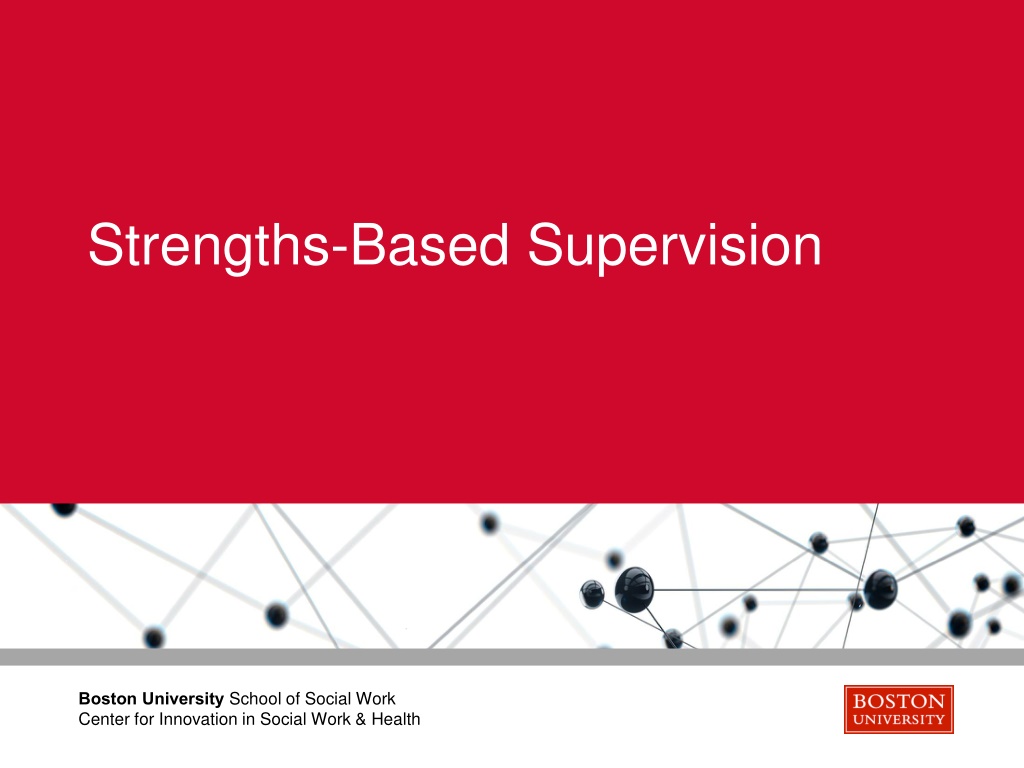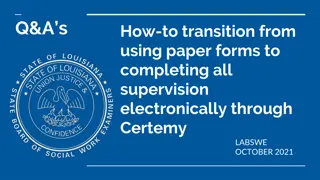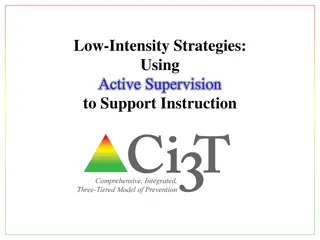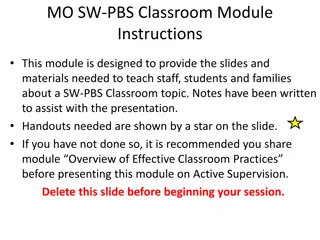
Strengths-Based Supervision at Boston University Center for Innovation
Explore strengths-based supervision at Boston University School of Social Work Center for Innovation, focusing on empowering CHWs, fostering skill development, and creating collaborative relationships. Learn about the goals, activities, and approaches of this innovative supervision model.
Download Presentation

Please find below an Image/Link to download the presentation.
The content on the website is provided AS IS for your information and personal use only. It may not be sold, licensed, or shared on other websites without obtaining consent from the author. Download presentation by click this link. If you encounter any issues during the download, it is possible that the publisher has removed the file from their server.
E N D
Presentation Transcript
Strengths-Based Supervision Boston University School of Social Work Center for Innovation in Social Work & Health
Strengths-Based Supervision Objectives Boston University Slideshow Title Goes Here By the end of the session participants will be able to: Define a strengths-based approach to supervision in the workplace Illustrate four elements of strengths-based supervision using real-life supervision examples Practice providing strengths-based feedback in supervision sessions
Strengths-Based Supervision Activity: Word Toss Boston University Slideshow Title Goes Here You are resilient! Name one thing that helps you bounce back. Consider challenging Events Circumstances Situations People
Strengths-Based Supervision Activity: Word Toss Boston University Slideshow Title Goes Here Name one thing that helps the CHWs you supervise bounce back. Consider challenging Events Circumstances Situations People
Strengths-Based Supervision Strengths-Based Approach Boston University Slideshow Title Goes Here Concentrates on inherent strengths Personal strengths aid in recovery or empowerment Asset-based approach Goal is to promote the positive
Strengths-Based Supervision Strengths-Based Supervision Boston University Slideshow Title Goes Here We define strengths-based supervision (SBS) as a process in which supervisors and supervisees collaboratively assess and build upon supervisee strengths, including cultural assets, and in which supervisee contributions to supervision are valued. What words come to mind when you hear strengths- based supervision?
Strengths-Based Supervision Goals of Strengths-Based Supervision (SBS) Boston University Slideshow Title Goes Here CHW empowers clients to make good decisions Supervisor identifies CHW competencies and amplifies them through supervision Use client cases as opportunities to foster skill development Actively uses solution-focused language Creates an environment of trust and safety Collaborative relationships Ongoing mutual evaluation of performance and relationship
Strengths-Based Supervision Four Elements of Strengths-Based Supervision Boston University Slideshow Title Goes Here 1. Parallel the principles of your organization. Supervision parallels the work we expect CHWs to provide to clients Supervisor models principles Application of C3 CHW Core principles in supervision. 2. Integrate the use of individual and group supervision. Individual supervision allows for relationship building, development of trust, and open communication Individual supervision allows for strengths assessment Group supervision fosters efficiency, team cohesion, increased critical thinking, rich connections, and strength in community Problem solving through group reflection leads to better decision making
Strengths-Based Supervision Four Elements of Strengths-Based Supervision Boston University Slideshow Title Goes Here (cont.) 3. Integrate the use of both crisis and in-depth supervision processes. Supervisor available for crisis-orientated supervision to process complicated situations Crisis supervision is episodic, scheduled supervision allows for in- depth analysis In-depth supervision allows exploration of struggles and successes In-depth supervision leads to reflective dialogue that moves away from problem-focused supervision
Strengths-Based Supervision Four Elements of Strengths-Based Supervision Boston University Slideshow Title Goes Here (cont.) 4. Fully engage all three functions of supervision. Administrative Monitoring and evaluating service delivery Holding CHWs accountable for quality services to clients Supportive Stress management Supervision is empathetic and genuine Educational Professional growth and development
Strengths-Based Supervision Reflection and Application of Strengths-Based Boston University Slideshow Title Goes Here Supervision Apply a strengths-based approach to a supervision case study
Strengths-Based Supervision Reflective Supervision Boston University Slideshow Title Goes Here Promotes and supports the development of a relationship-based organization Supervision provides an environment for learning and professional development
Strengths-Based Supervision Three Building Blocks to Reflective Supervision Boston University Slideshow Title Goes Here REFLECTION COLLABORATION REGULARITY
Strengths-Based Supervision Three Building Blocks to Reflective Supervision Boston University Slideshow Title Goes Here Reflection Step back from the situation Examine what the experience really means What are your thoughts and feelings? Build on the foundation of honesty and trust Leads to self-awareness of strengths and limits
Strengths-Based Supervision Three Building Blocks to Reflective Supervision Boston University Slideshow Title Goes Here Collaboration Teamwork Allows for self-development Opportunity to learn from each other Reciprocal responsibility and decision making Open communication without fear of judgement, disclosure, or ridicule
Strengths-Based Supervision Three Building Blocks to Reflective Supervision Boston University Slideshow Title Goes Here Regularity Information is routinely scheduled Sufficient time for supervision Time is protected from rescheduling, cancellation, or procrastination If supervision time needs to be cancelled, it should be rescheduled as soon as possible
Strengths-Based Supervision Attributes of Great Supervision Boston University Slideshow Title Goes Here Choose two strips of paper Provide an example of when you applied these attributes in your supervision






















